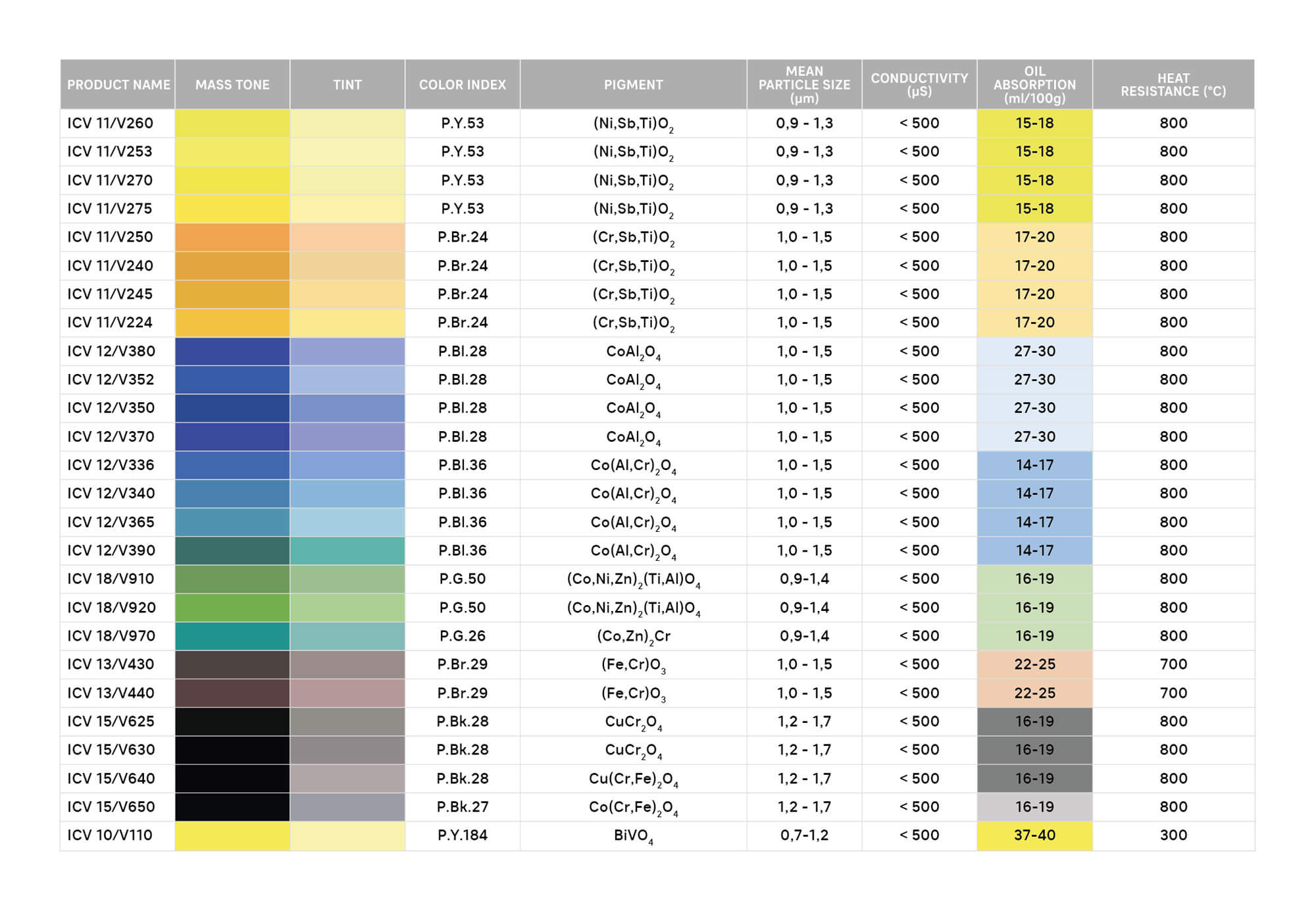Complex Inorganic Coloured Pigments – CICPs – are the most stable class of pigments developed by the color industry. Meeting high heat-stability and chemical inertia standards, as well as light and weather-fastness, and taking into account its final product’s sustainability.
Day after day, formulators become more and more increasingly significant meeting the market’s demands under a lasting long-term standpoint, as well as for its quality.
Complex Inorganic Coloured Pigments – CICPs are inorganic pigments obtained by a mixture of two or more metal oxides followed by high temperature process.
When metal oxides such as Al, Co, Fe, Cr, Zn, etc… are blended and reach a high temperature exceeding 800°C during the calcination process, they become reactive and form a new and more stable compound, with a different and stable crystalline structure: the so-called inorganic pigment.
Based on which metal oxides are used, the percentage of different oxides, and the calcining temperature, we can obtain different pigment outcomes with different colors and crystalline structures. The unique properties are directly related to high-temperature processing (above 800°C/1500F), which requires sharp control over chemical and temperature parameters, ensued all thanks to our high-tech modern systems.
The so-called inorganic pigments have a granulometric and morphology distribution of controlled particles that offers:
- High coloring and hiding power
- Easily dispersed in different sets of formulated systems
- Easy applicability
Inco’s ICCPs may have different granulometric distribution, therefore might have different oil absorptions.

This typology of inorganic pigments has outstanding properties like:
For this reason, they feature prime performance in terms of:
CICPs pigments are available in a range of different shades of color, but also can be specifically formulated on request.
Inco has always developed specific Taylor Made Solutions for its customers. Making it one of our company’s first key values.
Our customers’ happiness is always our first priority.
Successfully used in different sectors where light and heat resistance are required: